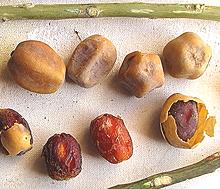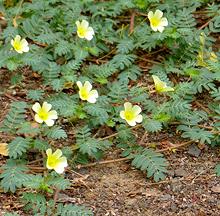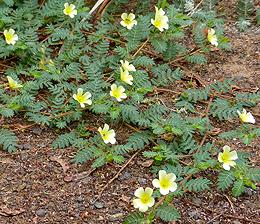
SAFARI
Users
Zygophyllaceae
-Family
Desert Date [Soap Berry Tree, Thron Tree, Egyptian myrobalan, Egyptian balsam,
Zachum oil tree; Lalob, Hidjihi, Inteishit, Heglig, Hijlij (Arabic);
Aduwa, Mchunju. Bedena (Africa); Balanites aegyptiaca]
[Soap Berry Tree, Thron Tree, Egyptian myrobalan, Egyptian balsam,
Zachum oil tree; Lalob, Hidjihi, Inteishit, Heglig, Hijlij (Arabic);
Aduwa, Mchunju. Bedena (Africa); Balanites aegyptiaca]
This shrub or small tree (to 33 feet) is common in Egypt, and all across Africa in the Sahel-Savannah band south of the Sahara. It is also found on the Arabian Peninsula. Though called "desert date" it is not at all related to the date palm. It is known to have been cultivated in Egypt for more than 4000 years. The fruit, about 1 inch long, is somewhat bitter, but is appreciated in dry periods when other food plants are not bearing much fruit. Leaves and shoots are eaten raw or cooked during famine times, and the flowers are also eaten. The oily seeds are shelled and boiled to make them less bitter. They are also ground, then boiled in lots of water, and the oil is skimmed from the top to use as cooking oil. The fruit is also fermented to produce an alcoholic beverage. Various parts of the tree are used for medicinal purposes, and processed into soap. There are a few other Balanites species that are used
similarly, but on a much lesser scale. Their fruit varies from sweet
to mildly toxic, and their seeds are moderately toxic, but the oil
from the seeds is not toxic.
Photo by Bernard DUPONT distributed under license
Creative Commons
Attribution 2.0 Generic
Puncture Weed [Puncture-vine, goat's-head, bindii, small caltrops, devil's-thorn,
devil's-weed, Tackweed. Tribulus terrestris of subfamily
Tribuloideae]
[Puncture-vine, goat's-head, bindii, small caltrops, devil's-thorn,
devil's-weed, Tackweed. Tribulus terrestris of subfamily
Tribuloideae]
I remember when, 65 years ago, this noxious stuff sprawled all over sidewalks in Burbank, California, puncturing bicycle tires and painfully stabbing feet, even through thin soled shoes. It seems to have been largely eradicated, I haven't seen any for many years, but there's probably still some around. This troublesome weed is native to the Mediterranean region, but has been naturalized to all the warmer regions of the world, all the way up into Canada, and as far south as Australia. In East Asia, the leaves and tender shoots are eaten, and the stems
have been used to adulterate diluted Buttermilk, making it look like
undiluted. Among body builders, an extract is used that is supposed
to increase testosterone, but controlled studies have failed to show
this, and it has not been proven safe.
Photo by T.K. Naliaka distributed under license
Creative Commons
Attribution 4.0 International
|
Krameriaceae - Family
Native to the Americas, the only Genus in this Family, Krameria consists of a number of desert plants that are partially parasitic on other plants. A couple have had minor medicinal uses, and ground roots have been used in Portugal to dye wines ruby red. but I find no evidence of any other use as food.



